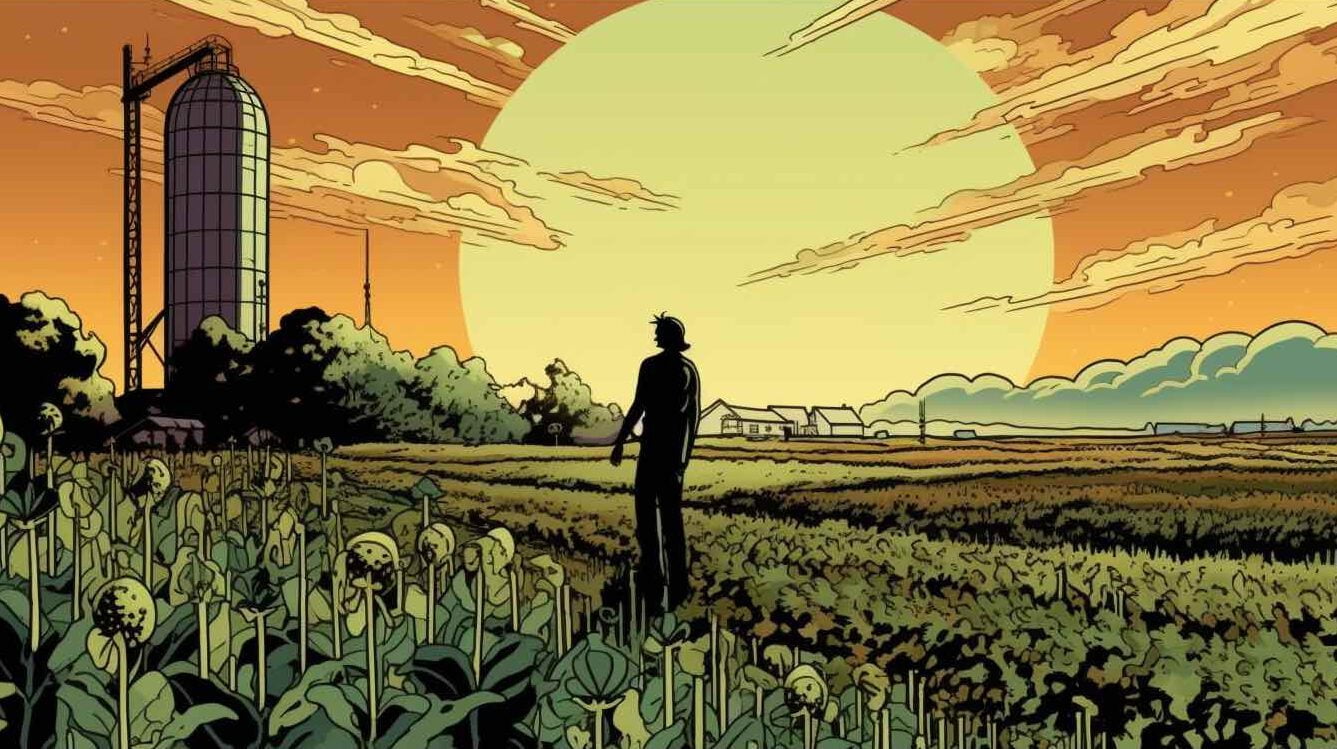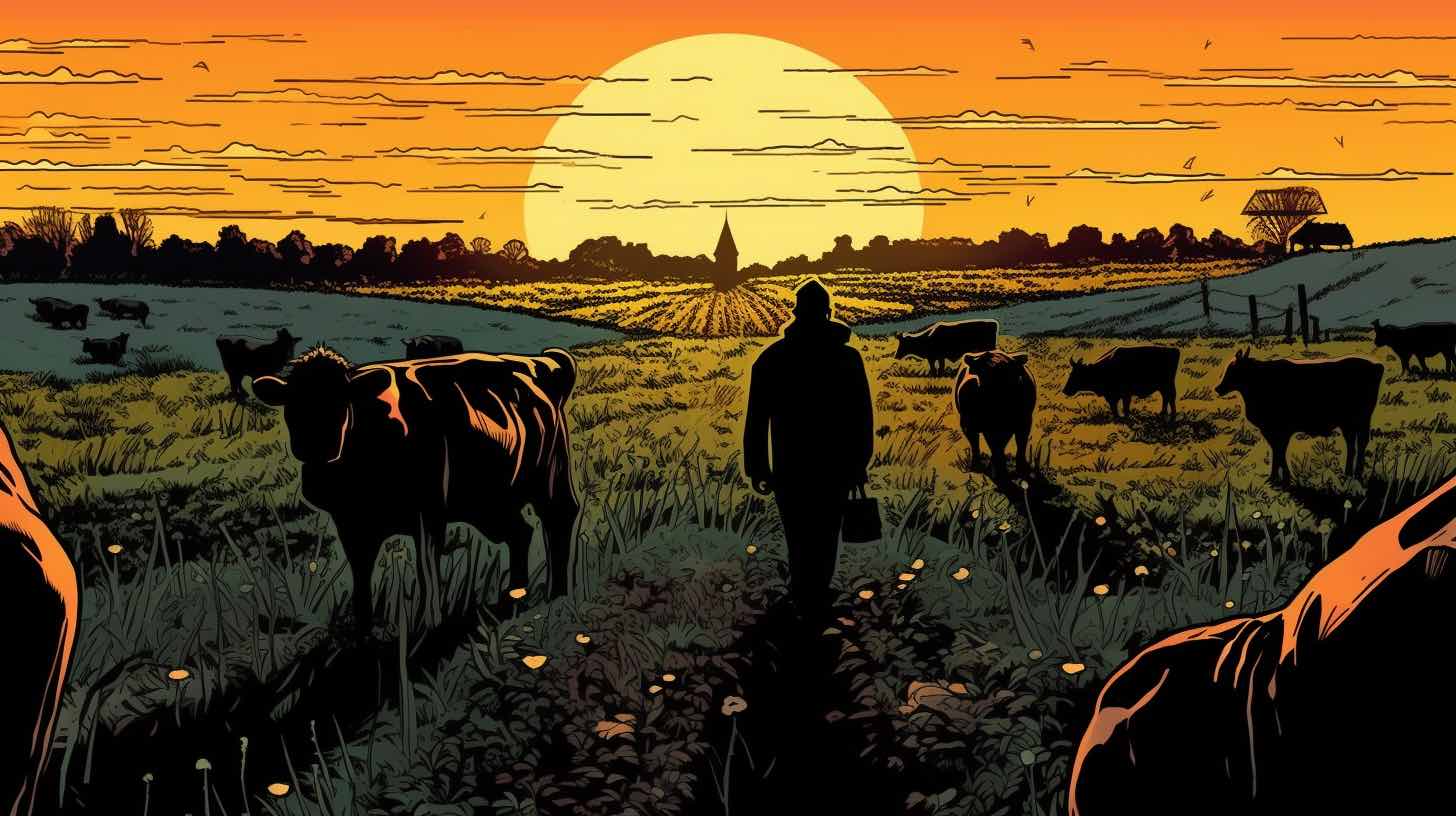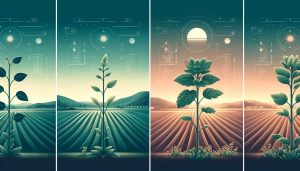As a farmer, I am in the unique position of being both a contributor to, and a victim of, climate change. This complex relationship between agriculture and climate change isn’t easy to navigate, but it’s critical for us to understand it if we want to ensure food security and mitigate the impacts of climate change.
I see the importance of agriculture every day. It not only provides food for billions, but it also forms the livelihood for many of us. However, I also see how our farming activities can contribute to climate change through the emission of greenhouse gases, making us part of the problem as well as the solution.
Agriculture’s Contribution to Greenhouse Gas Emissions
On my farm in Southwest France, like many others, there are several ways we contribute to greenhouse gas emissions. Our livestock (which we no longer have), for example, produced methane, a potent greenhouse gas, as part of their digestion process. Then there’s the nitrous oxide, another powerful greenhouse gas, which is released when we apply synthetic fertilizers to our fields. Fortunately that is also history as we transformed our farm into 100% organic.
And let’s not forget about deforestation, often done to make way for agricultural expansion, which contributes to carbon dioxide emissions. Here’s a breakdown of the agriculture sector’s contribution to greenhouse gas emissions:
- Livestock and manure: 5.8%
- Agricultural soils: 4.1%
- Crop burning: 3.5%
- Deforestation: 2.2%
- Cropland: 1.4%
- Rice cultivation: 1.3%
- Grassland: 0.1%
All in all, Agriculture, Forestry and Land Use directly accounts for 18.4% of greenhouse gas emissions. When we include aspects like refrigeration, food processing, packaging, and transport – basically the whole food system – that number goes up to around one-quarter of greenhouse gas emissions. Link to source.
The Influence of Our Farming Practices on Climate Change
The farming practices we choose to employ can exacerbate or alleviate climate change. On my farm, we’ve seen firsthand how intensive farming, which often involves heavy use of chemical fertilizers and pesticides, can lead to soil degradation and increased carbon emissions. Similarly, when livestock overgraze, it can lead to land degradation and desertification, further increasing carbon emissions. Intensive farming usually leads to lower consumption prices and higher wealth, but typically also results in many new problems and challenges. Read about the differences between intensive and extensive farming.

Climate Change’s Impact on Agriculture
It’s a two-way street. Just as agriculture impacts climate change, the changing climate also influences agriculture. Shifts in temperature and precipitation patterns can affect our crop yields and livestock productivity.
Fluctuating Agricultural Productivity
I’ve seen the impacts of rising temperatures and changing rainfall patterns on the growth and productivity of our crops. Some years we might have a bumper crop, while other years we struggle to break even. These fluctuations can pose significant challenges for food security and the overall stability of our agricultural economies.
Climate change doesn’t just affect our crops and livestock. It can also influence the availability and quality of the water and soil resources we depend on for agricultural production. I’ve watched as increased temperatures led to higher evaporation rates, reducing the water available for irrigation. And I’ve seen how changes in rainfall patterns (in France especially in 2021, followed by one drought after another) can lead to soil erosion and degradation, affecting soil fertility and crop productivity.
As the climate changes, the health of agricultural workers and livestock is at risk too. Heat stress can affect livestock productivity and reproduction, while us farmers may face increased risks of heat-related illnesses.
Adapting Agriculture to the Changing Climate
Despite these challenges, there’s also potential for agriculture to adapt to the changing climate conditions. This involves implementing climate-resilient agricultural practices and leveraging technology to improve productivity and sustainability. On my farm, we’ve been exploring different strategies for climate-resilient agriculture and using technology to enable climate-smart farming practices.
Strategies for Climate-Resilient Agriculture
Climate-resilient agriculture is about adopting practices that increase the resilience of our agricultural systems to the impacts of climate change. In our case, this means finding ways to maintain productivity even in the face of changing weather patterns, soil and water conditions.
The Role of Technology in Climate-Smart Agriculture
I’ve also been exploring how technology can play a crucial role in enabling climate-smart agriculture. This includes the use of precision farming technologies to optimize the use of water and fertilizers, climate forecasting tools to inform our planting decisions, and the use of biotechnology to develop climate-resilient crop varieties. Read more about precision agriculture.
The Potential Within Agriculture for Mitigation of Greenhouse Gas Emissions
Being a farmer, I’ve come to realize that we have a real chance to make a difference in mitigating greenhouse gas emissions. It’s not just about adapting to the changes, but actively working to reduce our impact on the environment. To my fellow farmers, remember that we have the power to transform our practices and leverage the potential of our lands for carbon sequestration.
Sustainable Farming Practices to Reduce Emissions
I’ve been exploring various sustainable farming practices over the years that can help reduce our greenhouse gas emissions. For instance, organic farming has proven to be a great ally. It minimizes the use of synthetic fertilizers and pesticides, which are known contributors to greenhouse gas emissions.
I’ve also thought about incorporating agroforestry into my farm. This practice involves integrating trees into agricultural landscapes, which not only improves biodiversity but also has the potential to capture and store carbon from the atmosphere, a process known as carbon sequestration.

Regenerative agriculture is another method I have considered: It focuses on improving soil health and restoring degraded soil biodiversity, which can lead to increased carbon sequestration and improved long-term farm sustainability.
The Role of Carbon Sequestration in Agriculture
One of the most significant aspects of sustainable farming practices that I’ve been particularly excited about is the potential for carbon sequestration. It involves capturing and storing carbon dioxide from the atmosphere, and it’s a process that agriculture can significantly contribute to. By adopting practices like agroforestry, cover cropping, and soil management techniques that enhance soil organic carbon, we can turn our farms into carbon sinks.
I feel the weight of responsibility when it comes to climate change. We play a significant role, both as contributors and potential mitigators. As our climate continues to change, we need to adapt and evolve, using sustainable practices and technologies to ensure food security and mitigate the impacts of climate change. It won’t be easy, but I believe in our resilience and our ability to rise to the challenge.
PS: Weighing the CO2 Emissions in Organic vs Conventional Farming: A Look at Vineyards”
And by the way.
The argument put forth by many conventional farmers that organic farming might lead to increased greenhouse gas emissions due to more frequent tractor use for mechanical labor is a complex one. The balance between the decreased use of chemical inputs, which themselves can contribute to greenhouse gas emissions during their production and application, and the increased fuel use for mechanical weed and pest control, is not straightforward. In the specific case of vineyards, it’s known that organic farming requires more intensive labor, which often means more passes with a tractor to control weeds without the use of herbicides. This could potentially increase fuel consumption and hence CO2 emissions. However, there’s also the possibility that the enhanced soil health and carbon sequestration in organic farming systems could offset these emissions.
Unfortunately, I was unable to find a specific study comparing the CO2 emissions from tractor use in organic vs conventional vineyard farming during the allotted time. For a definitive answer, more targeted research would be necessary.
In the face of climate change, we as farmers have a vital role to play. Let’s work together for a sustainable future.
FAQs
- How is agriculture affecting the environment? Agriculture affects the environment in several ways, including contributing to greenhouse gas emissions, leading to deforestation, and causing soil degradation and water pollution.
- How much does agriculture contribute to greenhouse gas emissions? Agriculture, Forestry and Land Use directly accounts for 18.4% of greenhouse gas emissions. The food system as a whole – including refrigeration, food processing, packaging, and transport – accounts for around one-quarter of greenhouse gas emissions1.
- What are the largest contributors to climate change? The largest contributors to climate change are energy production, industry, and agriculture, which together account for the majority of global greenhouse gas emissions.
- How does food production affect climate change? Food production affects climate change through the emission of greenhouse gases during agricultural production, deforestation for agricultural expansion, and the energy used in food processing and transportation.
- What strategies can be used to make agriculture more climate-resilient? Strategies for climate-resilient agriculture include adopting sustainable farming practices, leveraging technology to improve productivity and sustainability, and implementing policies that support climate-smart agriculture. You can learn more about these strategies in this post.

















